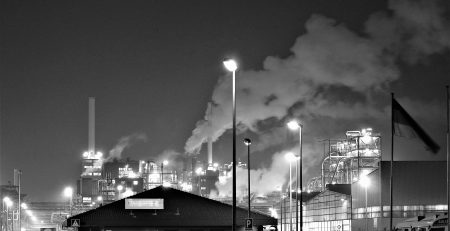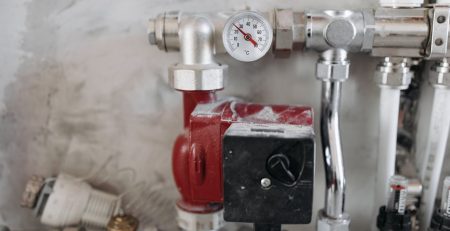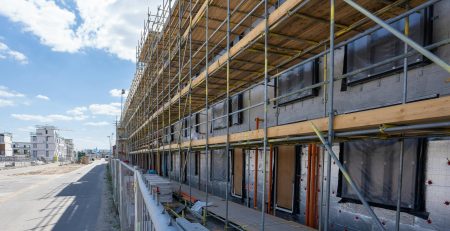China’s 2024-2025 Energy Conservation and Carbon Reduction Action Plan
In an ambitious move to combat climate change and promote sustainable development, China’s State Council has released the “2024-2025 Energy Conservation and Carbon Reduction Action Plan.” This comprehensive plan outlines a strategic approach to enhance energy efficiency and reduce carbon emissions across various sectors, including buildings, industry, and transportation. This article delves into the key components of the plan, highlighting its goals, actions, and implications for the future.
Overall Goals
The “2024-2025 Energy Conservation and Carbon Reduction Action Plan” sets forth clear and measurable objectives to guide China towards a greener future. The primary goals include reducing energy consumption per unit of GDP by approximately 2.5%, lowering CO2 emissions per unit of GDP by approximately 3.9%, and increasing the share of non-fossil energy consumption to around 20% by 2025. Additionally, the plan aims to implement energy-saving and carbon-reduction modifications in key areas to achieve significant energy and emission reductions.
Key Actions
The plan outlines a series of targeted actions across multiple sectors to achieve these goals:
- Reduction of Fossil Energy Consumption The plan emphasizes strict control of coal consumption, promoting clean and efficient coal use, and reducing non-electric coal usage. There is a strong focus on optimizing the oil and gas consumption structure, particularly by utilizing unconventional resources like shale oil and gas. These measures are designed to minimize the reliance on fossil fuels and transition towards cleaner energy sources.
- Promotion of Non-Fossil Energy A significant component of the plan involves accelerating the development of renewable energy sources. This includes the development of large wind and solar power bases, marine energy, and bioenergy. Additionally, the plan aims to improve renewable energy consumption capacity through grid upgrades and the development of energy storage solutions. These efforts will help to increase the share of non-fossil energy in China’s energy mix and reduce greenhouse gas emissions.
- Industrial Actions In the steel industry, the plan focuses on controlling new capacity, promoting low-carbon technologies, and enhancing energy efficiency. The petrochemical industry will see stringent policies on new capacity, promotion of high-efficiency equipment, and enhancement of process efficiencies. These actions are crucial for reducing emissions from some of the most energy-intensive industries.
- Building Energy Efficiency and Carbon Reduction The plan strongly promotes the development of prefabricated buildings to enhance construction efficiency and reduce waste. There is also a push for intelligent construction methods to optimize building performance. Accelerating the integration of photovoltaics in buildings to harness solar energy is another key focus. The plan enforces green building standards for all new urban buildings by 2025 and calls for extensive retrofitting of existing buildings to improve energy efficiency and reduce emissions.
- Transportation Sector Initiatives To reduce emissions from the transportation sector, the plan promotes the development of low-carbon transportation infrastructure, including electric vehicles and public transport systems. It also encourages the adoption of green logistics practices to reduce emissions from freight and delivery services. These initiatives aim to make transportation more sustainable and environmentally friendly.
Building Energy Efficiency and Carbon Reduction
The plan places a strong emphasis on enhancing energy efficiency and reducing carbon emissions in the building sector. A key strategy involves promoting the widespread development of prefabricated buildings, which significantly reduce energy consumption and construction waste by utilizing factory-manufactured components. Intelligent construction methods, such as the integration of AI and IoT technologies, are being actively pushed to optimize building performance and energy management.
A critical aspect of the plan is the acceleration of building-integrated photovoltaics (BIPV), where solar panels are seamlessly incorporated into building structures. By 2025, all new urban buildings are required to comply with green building standards, with a target for new public institution buildings and factory rooftops to achieve a 50% photovoltaic coverage rate. This initiative is projected to result in a renewable energy substitution rate of 8% in urban buildings.
The plan also focuses on retrofitting existing buildings to enhance energy efficiency. By 2025, the goal is to complete energy efficiency upgrades for an additional 200 million square meters of existing buildings, improving energy performance by 30% for residential buildings and 20% for public buildings. These retrofits include upgrades to heat pumps, radiators, chillers, exterior windows, insulation, lighting, elevators, and outdated heating networks. Heat metering and consumption-based billing are mandated to ensure accurate energy usage and encourage conservation.
Collectively, these measures are expected to save approximately 50 million tons of standard coal and reduce carbon dioxide emissions by about 130 million tons annually by 2025. The comprehensive approach not only aims to improve energy efficiency and reduce carbon emissions but also supports sustainable urban development and improved living standards. These initiatives align with China’s broader goals of carbon peaking and carbon neutrality, laying a solid foundation for a greener future.
Management and Implementation
To ensure the successful implementation of the plan, several management and enforcement mechanisms have been established. The plan strengthens energy and carbon reduction goals and evaluations, holding key stakeholders accountable for their contributions. Rigorous energy consumption and environmental impact assessments will be conducted for new projects to ensure they meet sustainability standards. Enhanced monitoring and enforcement mechanisms will be put in place to ensure compliance and track progress.
Support Mechanisms
The plan includes various support mechanisms to facilitate the transition towards sustainable practices. Robust institutional frameworks and standards will be developed to guide energy conservation and carbon reduction efforts. Pricing policies will be adjusted to discourage high-energy consumption and promote energy efficiency. Financial and technological support will be provided to promote the adoption of energy-saving and carbon-reduction technologies and practices. Additionally, market-based mechanisms such as carbon trading and green certificates will be promoted to incentivize reductions in carbon emissions.
Public Engagement
Recognizing the importance of public participation, the plan emphasizes nationwide campaigns to raise awareness and promote low-carbon lifestyles. Key initiatives include organizing public awareness campaigns to educate the public about the importance of energy conservation and carbon reduction. The plan also encourages individuals and communities to participate in energy-saving and carbon reduction efforts, fostering a culture of sustainability across the nation.
Conclusion
The “2024-2025 Energy Conservation and Carbon Reduction Action Plan” represents a significant step forward in China’s journey towards sustainable development. By setting clear goals, outlining targeted actions, and establishing robust support mechanisms, the plan aims to steer the nation towards achieving its carbon peaking and neutrality goals. The focus on innovative construction practices, industrial efficiencies, and public engagement highlights a comprehensive approach to building a greener future. As these initiatives unfold, they will not only contribute to China’s environmental goals but also set a precedent for global efforts in combating climate change.
At BAARCH, we support national energy goals with our expertise in energy efficiency and sustainable building practices. Our focus on enhancing energy efficiency in existing buildings aligns with the action plan’s objectives. We help clients achieve significant energy savings and reduce carbon emissions.
For more information on how BAARCH can assist you, contact us at contact@baarchconsulting.com.







